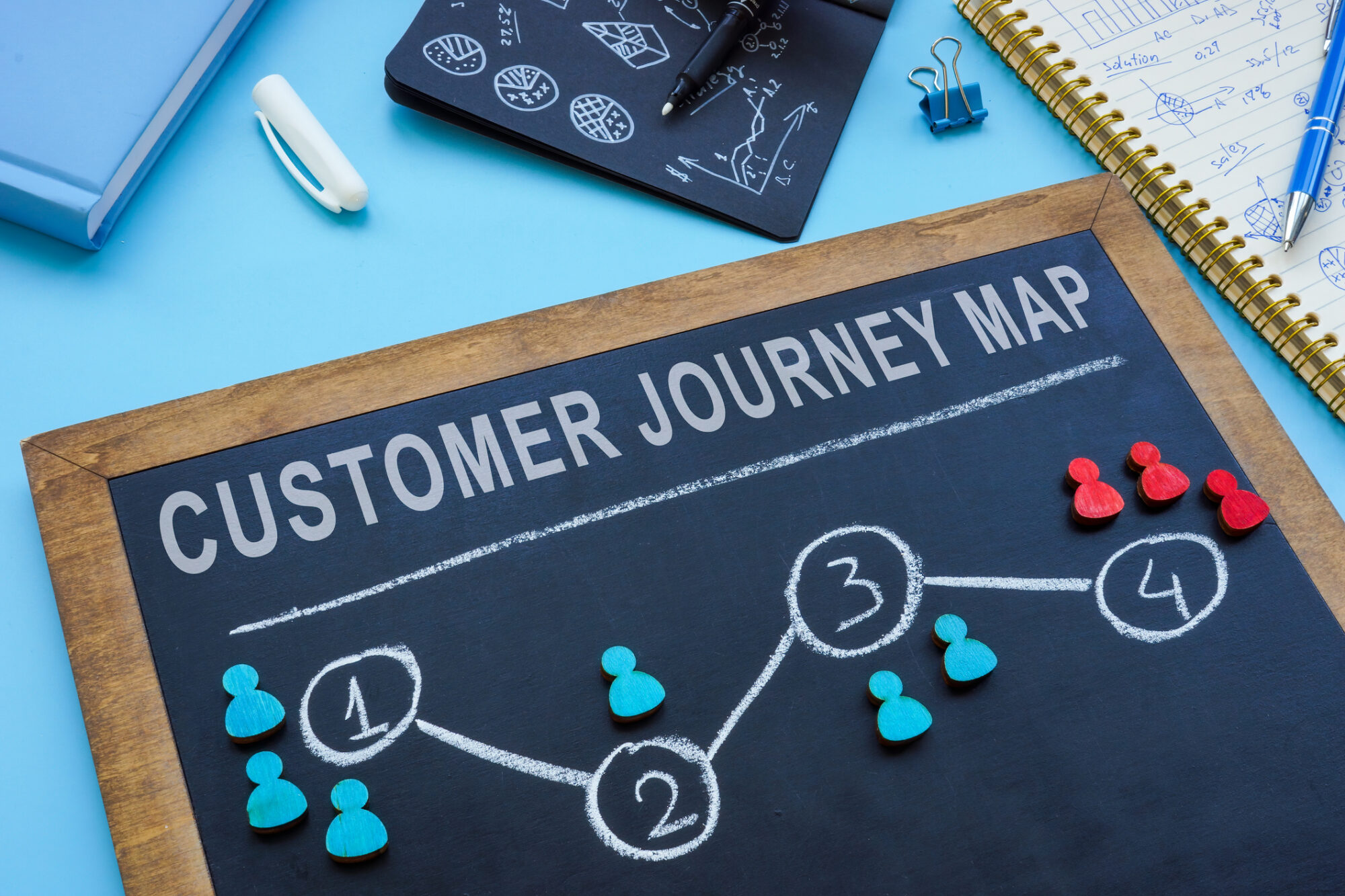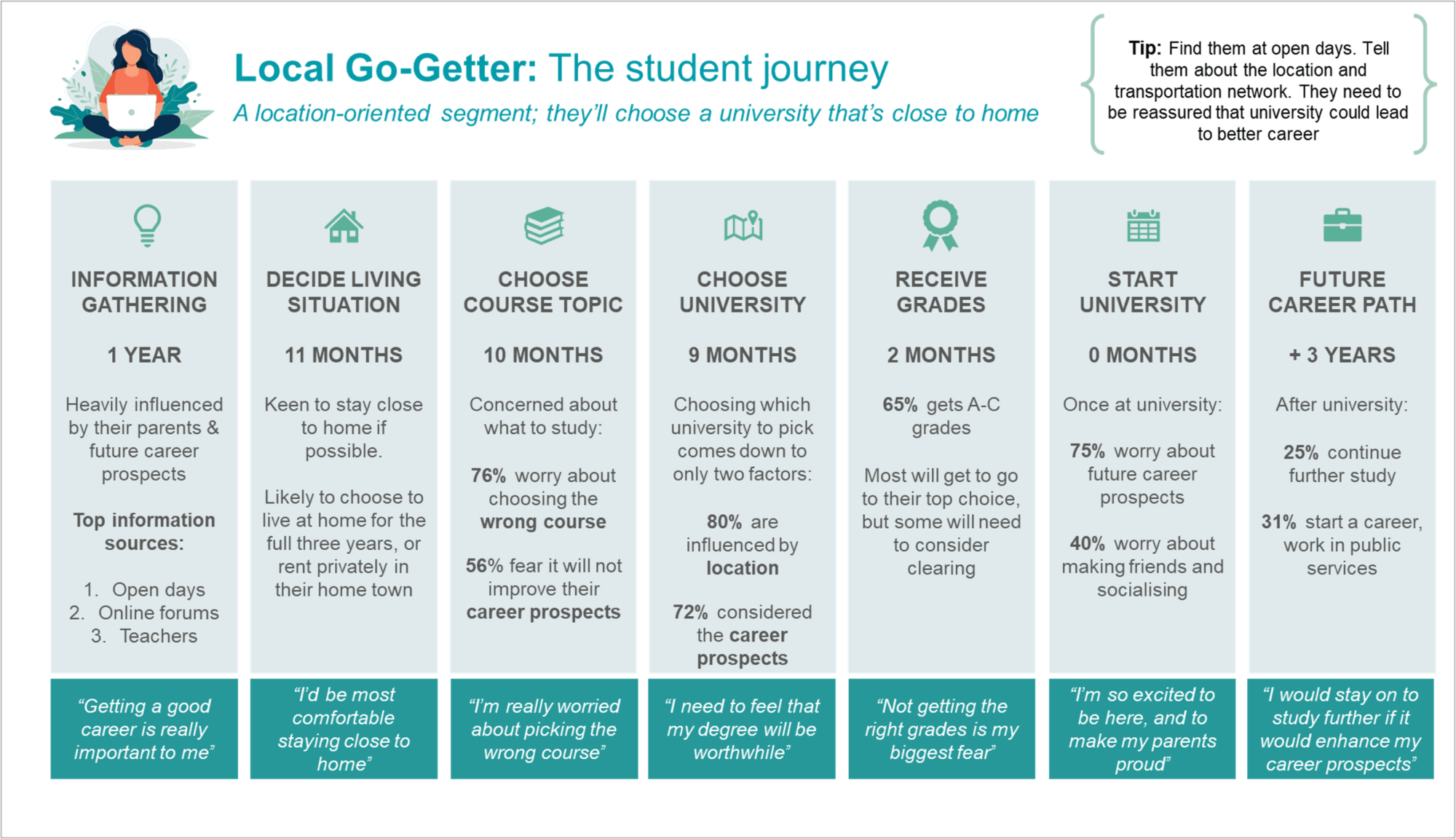Insights Article

What is customer journey mapping?
Customer journey mapping is the process of visualising every step a customer takes when interacting with your brand, from first awareness to long-term loyalty. When done well, it reveals where customers drop off, what’s driving their decisions, and how to improve their experience.
If you’re wondering how to map a customer journey, here are five clear steps you can follow:
Step 1 – Define your customer personas
A journey map is only useful if you know whose journey you’re mapping. To get started you need to:
- Identify distinct customer segments based on behaviours, needs, or demographics.
- Consider both current customers and potential customers you want to attract.
- Use data from surveys, CRM systems, and analytics to build accurate profiles.
Step 2 – Map the stages of the journey
Next, break the journey into clear stages. Common customer journey mapping steps include:
- Awareness
- Consideration
- Purchase
- Post-purchase experience
- Loyalty or advocacy
You’ll want to label these stages on your map. This gives you a framework for plotting touchpoints.
Step 3 – Identify key touchpoints
For each stage, note the customer journey touchpoints where customers interact with your brand. Examples include:
- Website visits or app usage
- Social media engagement
- Email marketing
- In-store visits or phone calls
- Customer service interactions
List all of these touchpoints in order, so you can see the full customer path.
Step 4 – Capture customer thoughts, feelings, and barriers
This stage is where the insights really start to appear. For each touchpoint, identify:
- What customers want at this stage
- How they feel (motivated, confused, frustrated, excited)
- Barriers to progression (price concerns, lack of information, poor usability)
If you work with different customer segments, note where the barriers differ. For example, a first-time buyer might hesitate due to trust, while a loyal customer might be frustrated by slow delivery. It is likely that you will need to conduct either quantitative or qualitative research at this stage.
Step 5 – Prioritise and fix the gaps
Now you’ve completed your journey map, it’s time to make a plan for improving conversion and retention. Areas you may want to explore include:
- Highlighting the points where customers most often drop off, for example: when moving from social media to your website, or when the experience isn’t seamless between online, phone, and in-store channels
- Identifying quick wins (e.g. adding FAQs, simplifying checkout, etc)
- Planning longer-term fixes (e.g. improving onboarding, redesigning the app, etc)
By tackling the most critical pain points first, you’ll see measurable results faster.
Why customer journey mapping matters
Brands that invest in customer journey mapping see higher conversion rates, stronger loyalty, and better customer satisfaction scores. It’s a practical way to align marketing, sales, and service teams around the real needs of your customers, as well as identify opportunities your competitors have missed.
Here’s an example of how it can work in practice. Here we have the customer journey of a student looking to choose a university to study at:

Need expert help mapping your customer journey?
At Clusters, we combine advanced audience segmentation with detailed journey mapping to pinpoint exactly where and why customers drop off, allowing you to fix any friction points and grow faster. Get in touch with us today to book your free consultation
Frequently asked questions
Q: What is customer journey mapping?
A: Customer journey mapping is the process of visualising every step a customer takes when engaging with your brand, from first awareness to loyalty. It helps identify pain points, improve the customer experience, and increase conversions.
Q: How do you map a customer journey?
A: To map a customer journey, define customer personas, outline journey stages, identify key touchpoints, capture customer thoughts and barriers, and prioritise fixes.
Q: What are customer journey touchpoints?
A: Customer journey touchpoints are the points of interaction between a customer and a brand, such as website visits, in-store experiences, customer service calls, and social media engagement.
Q: What are the benefits of customer journey mapping?
A: Benefits include improving customer experience, increasing loyalty, spotting sales opportunities, reducing churn, and aligning internal teams on customer needs.
Q: Can customer journey mapping improve conversions?
A: Yes. By identifying where and why customers drop off, brands can make targeted improvements that reduce friction and lead to more completed purchases.
Want these kinds of results?
We’d love to talk with you about how our insights could help your business grow. Drop us an email at hello@clusters.uk.com or call us on +44 (0)20 7842 6830.